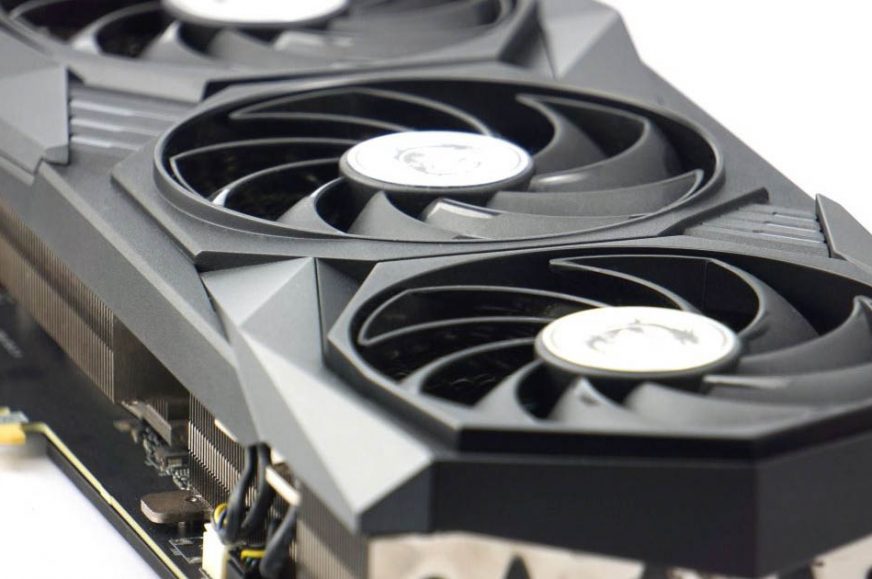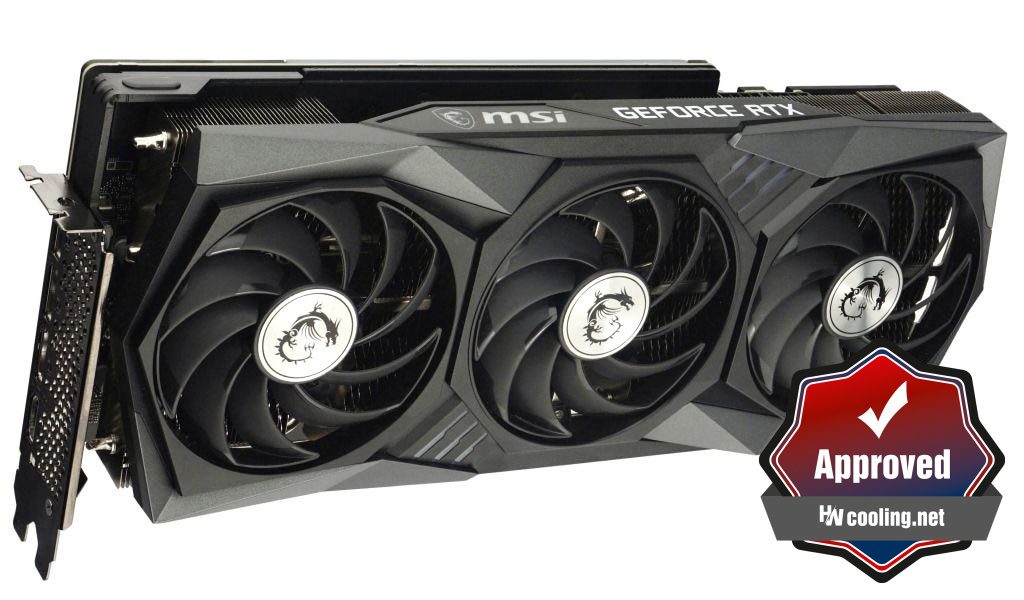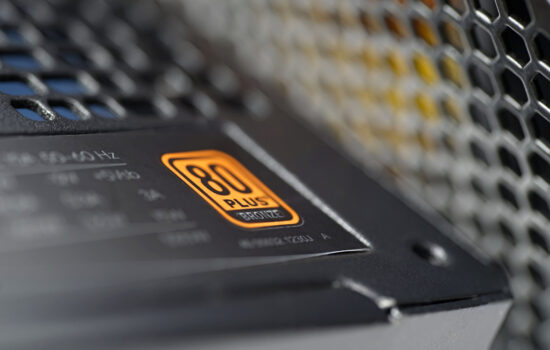Conclusion
You are probably already looking forward to the announced tests of the RX 6700 XT, but first let’s look at the results of the RTX 3060 Ti. We managed to add this graphics card to our database right before the new Radeon at the last minute and it is important for a full review of the RX 6700 XT. But now we’re going to see a sisterly duel of the RTX 3060 Ti and RTX 3070. These graphics cards are close in terms of performance and price.
Conclusion
RTX 3060 Ti Gaming X Trio compared to the RTX 3070 Gaming X Trio is 7–8% weaker in games with ray tracing off. With DXR turned on, the difference is slightly greater, especially in Battlefielde V. It is still true that the RTX 3060 Ti is well prepared for QHD resolution, but certain games with fps around 50 (typically Cyberpunk 2077 or Metro Exodus), won’t feel that smooth than on the RTX 3070 Gaming X Trio.
Overall, the performance loss scales as one would expect, considering there’s only a few shaders less. We’ve only noticed a surprise in Assassin’s Creed: Valhalla, where the RTX 3060 Ti Gaming X is 5% faster than the RTX 3070 across all resolutions in the same MSI version. This can probably be attributed to the higher clock speed that the RTX 3060 Gaming X Trio achieves. That ranges from 1954–1979 MHz. This is an increase of 18–42 MHz over the RTX 3070, even though both graphics cards have 1830 MHz boost in the specifications. Computing applications are slightly more sensitive about differences in shaders and the difference in performance is usually larger, in the range of 10–20% in favor of the RTX 3070 Gaming X Trio.
Whether the RTX 3060 Ti Gaming X Trio or the RTX 3070 Gaming X Trio is more advantageous, depends on the price to a large extent (MSRP). If we take into account that the RTX 3070 is more expensive by only 40 euros, as determined by MSI, then the price/performance ratio of the RTX 3060 Ti is less attractive. But it should be noted that the difference is really close. The average performance per euro is 3.226 for the RTX 3060 Ti and the RTX 3070 is only a tenth better, with which even the smallest discount can cut down.
The effectiveness of the RTX 3060 Ti is also slightly worse, the performance per watt coefficient is (10.114 vs. 10.456). Again, however, this is nothing dramatic and the existing difference only becomes apparent in very detailed analyses. Anyway, while the average performance of the RTX 3060 Ti Gaming X is 7.5% lower, this card draws only 5% less power at full load compared to the RTX 3070. The comparison with the RX 6800 is also present here, which has significantly better coefficients of game performance to the price (but watch out, this does not include ray-tracing performance), but Radeon, on the other hand, does not support DLSS, CUDA or OptiX. All these features belong to the useful added values of GeForce.
If RTX 3060 Ti Gaming Trio is significantly different in something than the RTX 3070 Gaming Trio, it’s the noise level, which is 1.8–2.1 dBA lower. The RTX 3070 Gaming X Trio is already extremely quiet, but MSI raises the bar even higher with the triple-fan RTX 3060. Although it should be noted that you are exchanging this lower noise for higher (but not that high) temperatures. MSI has thus apparently put more emphasis on even lower rpm in BIOS after the release of the RTX 3070, making the RTX 3060 Ti Gaming X one of the quietest graphics cards ever.
There aren’t many things we can blame this graphics card for. Apart from the larger dimensions, it’s maybe just that the MSI RTX 3060 Ti Gaming X Trio doesn’t offer a better price/performance ratio than the RTX 3070 Gaming X. And then the weaker price/performance ratio (excluding ray-tracing graphics) and also lower efficiency (worse performance per watt). But the beginning of next week will be more interesting, where we’ll compare it with Sapphire RX 6700 XT Nitro+.
| MSI RTX 3060 Ti Gaming X Trio |
| + High performance (appropriate for gaming in QHD – 2560 × 1440 px) |
| + Higher ray-tracing graphics performance compared to the RX 6800 |
| + Nice efficiency (performance per watt) |
| + Efficient cooler Tri Frozr 2 |
| + Extremely quiet operation (low fan and coils noise) |
| + Favorable overall price/performance ratio (i.e. including DXR and DLSS) |
| + Exclusive support for DLSS (2.0), CUDA and OptiX |
| + PCI Express bracket included in the package |
| + Appealing RGB LED lighting and verified to be very power-efficient |
| - Very similar and rather weaker price/performance ratio compared to the RTX 3070 Gaming X Trio |
| - Weaker non-RTX price/performance ratio compared to the RX 6800 |
| - Lower efficiency (performance per watt) than the competing RX 6800 |
| - Greater card width with possible collision in smaller PC cases |
| - Unavailability |
| manufacturer's suggested retail price: 725 Eur/18,990 Czk |
We’ve got the test games at Jama levova
- Contents
- MSI RTX 3060 Ti Gaming X Trio – Details
- Specs table
- Methodology: performance tests
- Methodology: how we measure power draw
- Methodology: noise and sound measurement
- Methodology: temperature tests
- Test rig
- 3DMark
- Age of Empires II: DE
- Assassin’s Creed: Valhalla
- Battlefield V
- Battlefield V with DXR
- Borderlands 3
- Control
- Control with DXR and DLSS
- Counter-Strike: GO
- Cyberpunk 2077
- Cyberpunk 2077 with DLSS and FidelityFX CAS
- Cyberpunk 2077 with DXR, DLSS and FidelityFX CAS
- DOOM Eternal
- F1 2020
- FIFA 21
- Forza Horizon 4
- Mafia: DE
- Metro Exodus
- Metro Exodus with DXR and DLSS
- Microsoft Flight Simulator
- Red Dead Redemption 2 (Vulkan)
- Red Dead Redemption 2 (Dx12)
- Shadow of the Tomb Raider
- Shadow of the Tomb Raider with DXR
- Total War Saga: Troy
- Wasteland 3
- Overall game performance and performance per euro
- CompuBench (OpenCL)
- CompuBench (CUDA)
- SPECviewperf 2020 and SPECworkstation 3
- FLOPS, IOPS and memory speed tests
- 3D rendering 1/2 (LuxMark and Blender@Cycles)
- 3D rendering 2/2 (Blender@Radeon ProRender and Eevee)
- Photo editing (Adobe Photoshop, Lightroom and Affinity Photo)
- Broadcasting (OBS and Xsplit)
- Password cracking
- GPU clock speed
- GPU and VRAM temperatures
- Net graphics power draw and performance per watt
- Analysis of 12 V subcircuit power supply (higher load)
- Analysis of 12 V subcircuit power supply (lower load)
- Analysis of 3.3 V subcircuit power supply
- Noise level
- Frequency response of sound
- Conclusion













